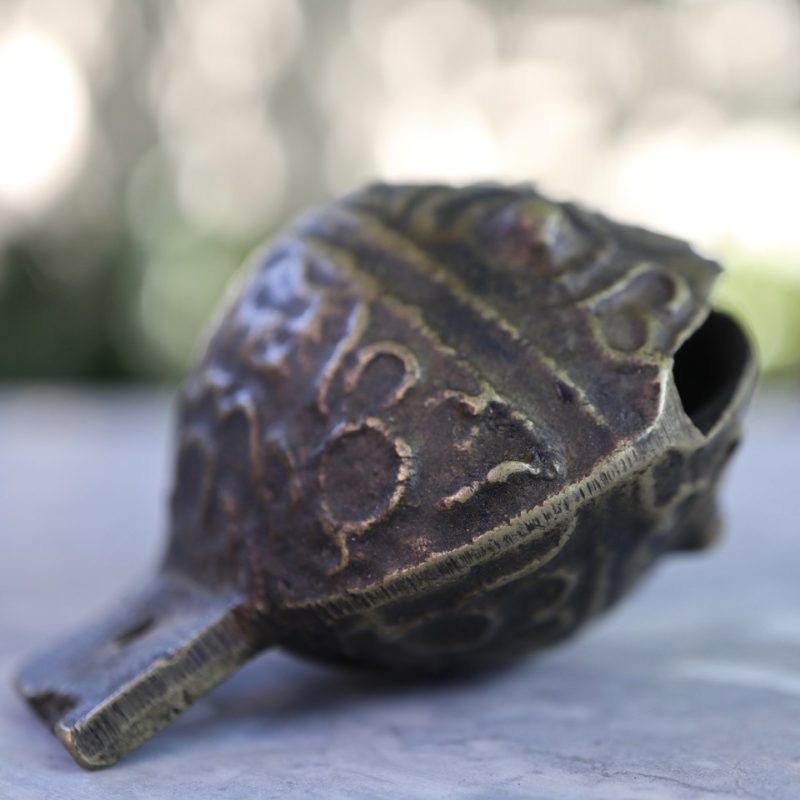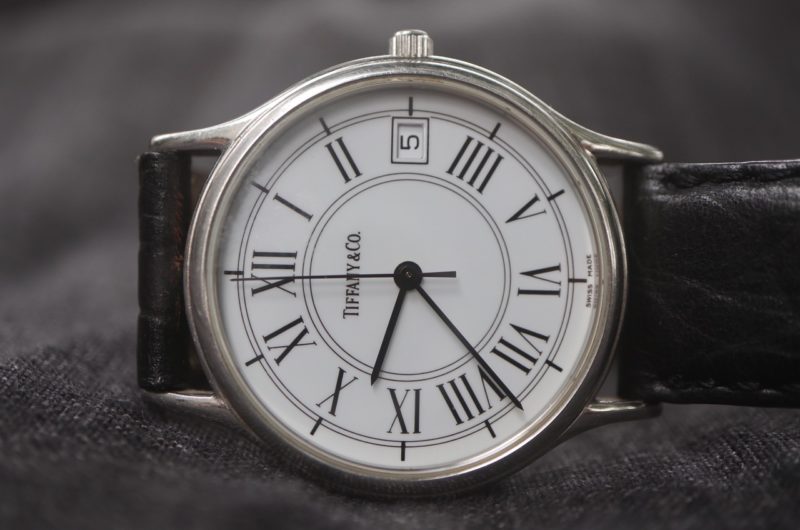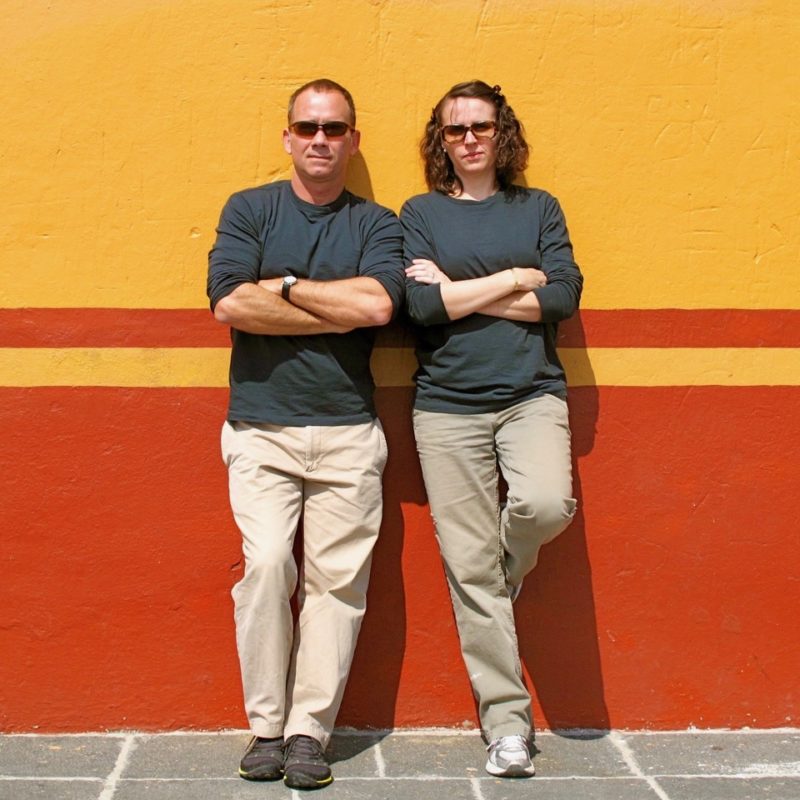My wife and I packed a couple of small bags, loaded our boxer, Boudin, into the backseat, and headed West–out of the path of the approaching storm. Just like the summer before, and the time before that, we figured we would be gone for no more than a day or two. We’d return, clean up, and get back to “normal.”
But, this time was different.
We spent the next two and a half months in Avery Island, Lafayette, Houston, Birmingham and Chapel Hill. Along with thousands of others, we were Katrina refugees.
During our “hurrication,” we drank a lot of wine–first the good stuff, and then whatever box or jug we could get our hands on. We became situational alcoholics, as in, “This situation sucks – I need a drink!”
We also had a number of fierce conversations. We talked about the failings of the Army Corps of Engineers and our fine politicians, the inevitable consequences of climate change for a low-lying region like ours, and, the possibility of rebuilding a better, safer and (hopefully) smarter New Orleans. We debated who among our friends would stay and who would leave. And, we talked about the things we left behind – those things that might not be there when we returned.
Of course, everybody mentioned photographs. “Family albums, and the memories they invoke are impossible to replace,” we all agreed.
“But what about the other stuff?” a friend asked. “If you could have only taken three additional items, what would they have been?”
“That’s easy,” I said, “my camel bell, watch and santo.”
The Camel Bell

The camel bell (photos by: Folwell Dunbar)
Near the end of my junior year in college, my father’s land development business imploded. The real-estate market collapsed and interest rates skyrocketed. He ended up spending almost everything he had, including paintings, servicing debts and bailing out partners. As a result, he wasn’t able to help me out with my tuition. I had an athletic scholarship and a couple of jobs at the time, but there was no way I could cover the cost. So, I applied for a student loan, and I decided to withdraw for at least a semester in order to save money.
That summer, I went to visit my great aunt, Anina Terrel. She was one of my favorite people on the planet. She was an amazing woman. She had been on the first ocean liner to pass through the Panama Canal, she had driven an ambulance in World War I, she had crossed Africa from Cairo to Cape Town on horses, camels, trains and steamships, and she had owned and managed a ranch in Colorado. “Aunt Anini,” as we called her, lived to be one hundred and three.
She was also a great storyteller. (She certainly had plenty of material.) When I arrived at her apartment, she launched into one of her many tales about her travels in China, her favorite country.
“…So, there I was on the Great Wall of China,” she said. “A tremendous camel train appeared off in the distance. As it approached, our entire party was swallowed up by a massive cloud of dust. When it finally settled, I looked down and noticed an old bronze bell swinging from the neck of the lead camel. I turned to my husband and said, ‘Roy, I want that bell. I have to have it!’
“Roy looked at me as though I was crazy, but, of course, he knew I wasn’t. I always got what I wanted.
“He asked our guide to barter for the bell. After a lively exchange, the guide tossed down a few coins, and the camel-puller cut the bell from the animal’s neck and tossed it up. That was around 1937 I believe. Your father must have been about ten years old at the time.”
Aunt Anini then reached into a desk drawer and pulled out the bronze bell. “I want you to have this,” she said. “And, I want you to see the world like I did. Travel is truly the world’s greatest teacher.” She paused to let me think about it.
“But first,” she continued, “I need for you to finish your formal education here.” She reached into her purse and handed me a check – and winked.
After graduating from Duke University in May of the following year, I joined the Peace Corps and moved to Ecuador. There, I would continue my education with “the world’s greatest teacher.”
Aunt Anini, as always, got what she wanted.
The Watch
My mom lived in a tiny three-room apartment in the Lower Garden District. She didn’t have a lot of stuff, but what she did have, barely fit. There were paintings by my dad leaning against the wall; she had a collection of ashtrays she had “borrowed” from restaurants and hotels; colonial santos, milagro crosses, and other collectables from Mexico crowded the tables; and her dishwasher was overflowing with items that were definitely not dishes. Her place looked like a funky old antique shop on Magazine Street.
One day I stopped by for a quick visit, and my mom immediately launched into an impassioned sales pitch: “Darling,” she said, “you just have to take some of this clutter off my hands! This place is a wreck – I can’t bear it any longer! Whatever you want, it’s yours!”
“I’m good,” I said. “My place is actually smaller than yours. And, besides, I don’t really need anything.”
“I didn’t ask what you need darling,” she said, “I asked you what you want. You know, I’m not gonna live forever.”
“That’s a rather morbid thing to say,” I said. “You’re only sixty-two. I’d prefer you stick around for a while.”
“I’ll try,” she said, “but, I am feeling rather ill.” She coughed, held the back of her hand to her forehead, and pretended to faint.
“OK mom,” I said, “you win. You can leave me the watch in your will.”

The watch (photos by: Folwell Dunbar)
My mom wore a men’s Tiffany watch. It was stainless steel with a large white face and black Roman numerals. She wore it on her right wrist, below a long row of bracelets that almost covered her entire arm.
“Yes,” I said, the watch is all I want.”
About a month later, I celebrated my thirtieth birthday with my family and future wife. After dinner, there were a few toasts, and, we all enjoyed a Doberge cake from Gambino’s Bakery. Then, my mom clinked her glass with a spoon, a little too loudly as always, and slid a small box across the table. I instantly knew what it was –and, I suspected what it might mean.
When I opened the box, I found that the watch was set to the day and hour I was born. My mom and I both smiled –and then cried.
My mother died four months later from complications due to ovarian cancer. To her wishes, we scattered her ashes beneath a magnolia tree in Jackson Square, attended mass at Saint Louis Cathedral, and then had lunch at Galatoire’s on her. I wore the watch.
The Santo
My mother and father loved Mexico. They traveled to the country almost every other year. They would sometimes visit the famous New Orleans sculptor, Enrique Alférez, who had a home and studio in Morelia. On one such trip, I was actually conceived.
As an artist, my father was inspired by the paintings and architecture of colonial cities like Cuernavaca, Guadalajara and Mérida. He especially admired the gilded ceilings and picture frames found in the ornate baroque churches. Over the years, my dad mastered the techniques used to create them, and he began to incorporate them into his own unique works of contemporary art.
My mother was more of a shopper. She bought silver jewelry from Taxco, pottery from Jalisco, and rugs and blankets from Oaxaca. And, she was always on the hunt for colonial santos. Santos are carved wooden or ivory figures usually depicting saints or angels. They can be found in the niches and alters of churches, convents and monasteries throughout Latin America and the Philippines. My mom ended up with a huge collection.
With their marble eyes and missing limbs, most of the santos in our house scared me. They looked like possessed dolls from a horror film.
All but one, that is.
There was a small boy about a foot tall with an angelic face and piercing eyes. Possibly a young Saint Jude, the patron saint of lost causes, it had three small flames shooting from its head. To me, it was like Leonardo da Vinci’s Vitruvian Man; it was perfect. Created by some long-forgotten artisan, it was simple yet elegant, delicate yet strong. It reminded me of the statue of David by Enrique Alférez on Poydras Street in New Orleans; it was proud and defiant.
When my mom died, she left the little santo to me. It now resides in our living room, in the center of a fireplace mantle.
The summer after I lost my mother, my future wife and I took our first trip together as a couple. For reasons I couldn’t explain, we went to Mexico. We visited Querétaro, Guanajuato, and San Miguel de Allende. It was an emotional and unforgettable trip. Over the years, we returned to the country no fewer than twenty times. We hurled ourselves into the mosh pit of Mexico City’s buses and subways, we sipped smoky mescal in Oaxaca, a city with a name you have to spit, we toured ruined henequen haciendas and bathed in sapphire-blue cenotes in the Yucatán, we battled Montezuma (and perhaps Maximilion I) in Puebla, we tested the marriage on the Volcano of Fire, and we survived (just barely) a most memorable night in a palapa in Yelapa. Like my parents, we fell in love with the country – so much so that we even named our new dog, “Mole,” after the sauce and not the rodent of course.

My wife and I in Mexico (Note: I’m wearing the watch) (photos by: Folwell Dunbar)
Today, whenever I pass through our living room, I always steal a glance at the little figure on the mantle. I think about our next excursion south of the border, I think about my parents and their (our) love affair with Mexico, I think about my own “concepción inmaculada,” and, I think about the objects of attachment that bind us together…
* Author’s Note: Our house didn’t flood in Katrina. We were lucky. This article is dedicated to the people who weren’t as fortunate – those who lost photographs and other objects of attachment.
Folwell Dunbar is an educator, artist and collector of sentimental things. When he’s not in his hometown of New Orleans, he’s probably in Mexico. He can be reached at fldunbar@icloud.com.
 NOLAbeings
Multimedia artist Claire Bangser created NOLAbeings as a portrait-based story project that marries...
NOLAbeings
Multimedia artist Claire Bangser created NOLAbeings as a portrait-based story project that marries...
 Data corner: Adobe Suite (create a PDF, social media graphic, presentation, edit a photo and video
Data corner is where you go to work with analytics and top tech skills. It takes on everything from PERL and SQL to Canva and Sprout Social.
Data corner: Adobe Suite (create a PDF, social media graphic, presentation, edit a photo and video
Data corner is where you go to work with analytics and top tech skills. It takes on everything from PERL and SQL to Canva and Sprout Social.

Wonderful article that grips the history of heart and mind! TY for sharing.
lovely slices of life. you are very fortunate to have ( had) such amazing people pass thru your life. I guess we all are if we actually listen to them in time